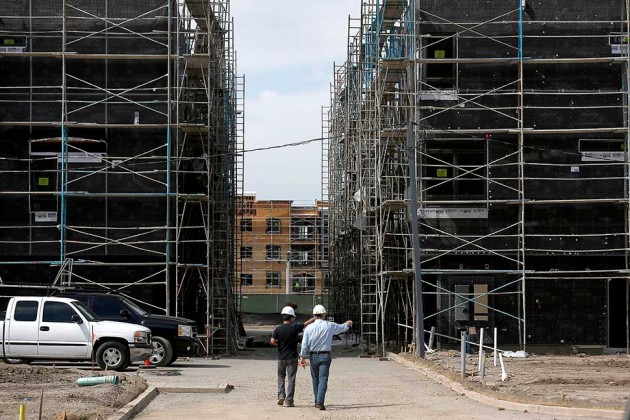California’s housing market has long been among the most expensive in the country, and the economic downturn has only made the situation worse. That’s one of the findings in a new report (pdf) from the California Housing Partnership Corporation, a nonprofit group set up by the state, that determined that Los Angeles County needs at least 490,340 more affordable homes to ease the housing burden on the state’s poorest residents. The county-level results echo the group’s February report (pdf) that found Californians need almost 1 million additional affordable housing units statewide.
The CHPC’s reports are, frankly, devastating. The problem they lay out is that the financial crisis turned owners into renters while driving wages down at the same time. In Los Angeles County, rents went up 25 percent from 2000 to 2012, but incomes fell 9 percent over the same period. (This includes adjustments for inflation.)
Los Angeles has almost a million workers who earn less than half of the county’s median income of $37,950 but only enough units available to house about half of them affordably. To keep rent at an manageable level, which has generally been considered 30 percent of income, Angelenos would need to make $55,920 a year at the going rental prices for a two-bedroom apartment.
To make housing more affordable, either prices can go down, or income can go up. California is already raising the minimum wage to $10 an hour, and Los Angeles isconsidering increasing pay to $15.37 for hotel workers. But that’s no magic wand. As CHPC wrote, “The gap between housing cost and income is so great that just raising the minimum hourly wage by a few dollars will not significantly reduce the shortfall of affordable homes in most counties.”
That means prices would need to go down in a meaningful way to ease affordability. As I reported earlier this month, the price crunch for buying is likely here to stay in coastal areas such as California, and CHPC says the state isn’t doing enough to build more affordable rental units that could bring rates down. The state’s four major sources of funding to build affordable housing have fallen a collective 79 percent since the housing crisis kicked in.

